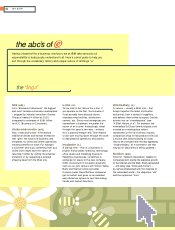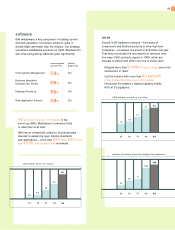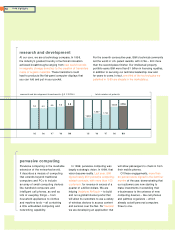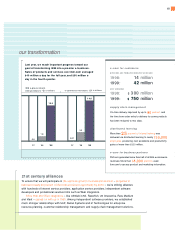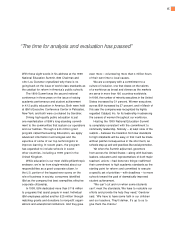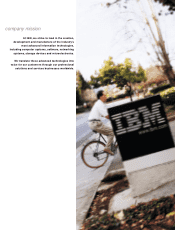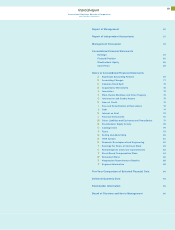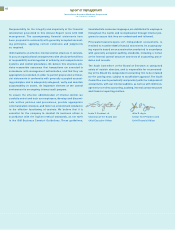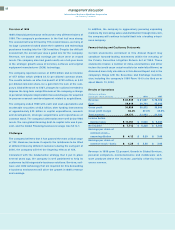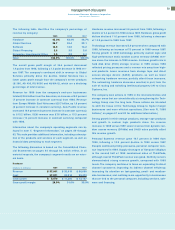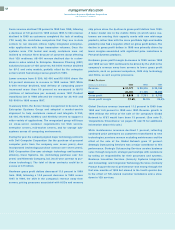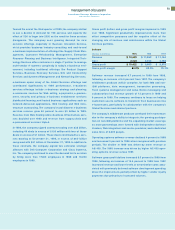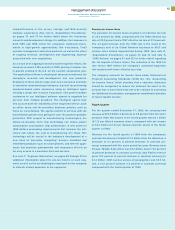IBM 1999 Annual Report Download - page 49
Download and view the complete annual report
Please find page 49 of the 1999 IBM annual report below. You can navigate through the pages in the report by either clicking on the pages listed below, or by using the keyword search tool below to find specific information within the annual report.
47
With those eight words in his address at the 1999
National Education Summit, IBM Chairman and
CEO Lou Gerstner crystallized why there is no
going back on the issue of world-class standards as
the catalyst for reform in America’s public schools.
The 1999 Summit was the second national
conference in three years on the issue of raising
academic performance and student achievement
in K-12 public education in America. Both were held
at IBM’s Executive Conference Center in Palisades,
New York, and both were co-chaired by Gerstner.
Driving high-quality public education is just
one manifestation of IBM’s long-standing commit-
ment to the communities that sustain our operations
and our families. Through a $40 million grant
program called Reinventing Education, we apply
advanced information technologies and the
expertise of some of our top technologists to
improve learning. In recent years, the program
has expanded to include schools in seven
other countries, including a 1999 grant in the
United Kingdom.
While education is our most visible philanthropic
endeavor, we’re far from single-minded about our
responsibilities as a good corporate citizen. In
the U.S.portion of the largest-ever survey on the
role of business in society, consumers identified
IBM as the company that best exemplifies effective
corporate citizenship.
In 1999, IBM dedicated more than $116 million
to programs that assist people in need. Individual
IBM employees added another $25 million through
matching grants and donations to nonprofit organi-
zations and educational institutions. And they gave
even more – volunteering more than 4million hours
of their own time to local causes.
We are a company with a commitment to a
culture of inclusion, one that draws on the talents
of a workforce as broad and diverse as the markets
we serve in more than 16 0 countries worldwide.
In 19 9 9 , the number of minority executives in the United
States increased by 31 percent. Women executives
across IBM increased by 27 percent, and in March of
this year the company was recognized by highly
regarded Catalyst, Inc. for its leadership in advancing
the careers of women throughout our workforce.
Hosting the 1999 National Education Summit
is completely consistent with the commitment to
community leadership. Nobody – at least none of the
realists – believes the transition from low standards
to high standards will be easy, or that it will be made
without painful consequences in the short term, as
schools step up and end practices like social promotion.
Yet when the Summit adjourned, governors
from across the United States — along with business
leaders, educators and representatives of both major
teachers’ unions — had done two things: reaffirmed
their commitment to high academic standards as the
starting point for reform; and committed to execute
a specific set of priorities – with deadlines – to move
schools toward the goal of dramatically improved
student achievement.
“We can’t cut and run when some students
can’t meet the standards. We have to redouble our
efforts and provide the help they need,” Gerstner
said. “We have to have some faith in our children
and our teachers. They’ll deliver. It’s up to us to
give them the chance.”
“The time for analysis and evaluation has passed”





